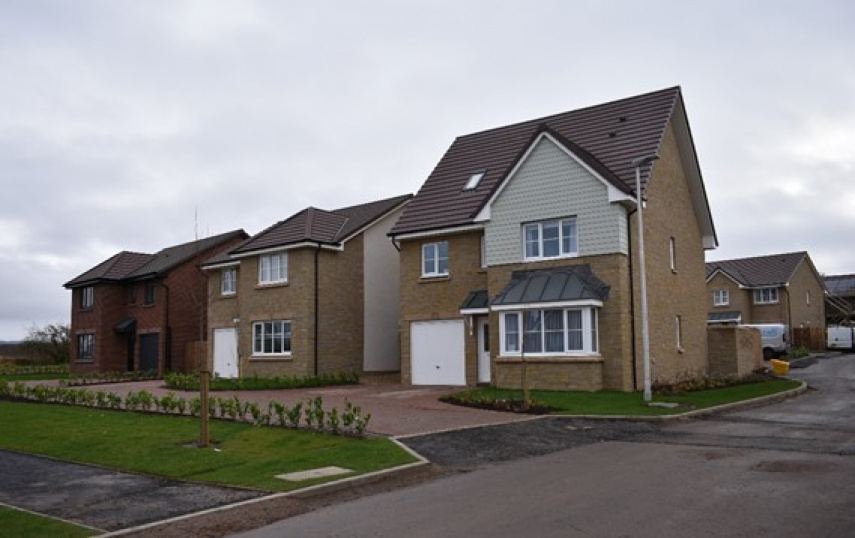Castle Gardens, Pencaitland
The Castle Gardens development is located on the southern edge of Pencaitland in East Lothian. It demonstrates the importance of maintaining an up-to-date development plan and offers insights into the role of land promoters in place promotion and risk sharing. A 6.7 hectare (16.5 acre) greenfield development project that will deliver 120 new homes across two phases, development on Castle Gardens began in 2018 and is expected to continue until 2022.
Approach
The site was submitted for inclusion in the LDP by Strutt & Parker, acting on behalf of the landowner – a local family still resident in Pencaitland – but it was not included in the LDP adopted in 2008. At the end of 2013, Strutt & Parker brought the site to Gladman Developments Ltd., a privately owned property company and strategic land promoter, which specialises in facilitating land to the house building industry; both private housebuilders and affordable housing providers, such as housing associations. They reached a promotion agreement with the landowner, as opposed to an options agreement or conditional contract more commonly used by UK housebuilders in acquiring land for residential development. Under the terms of a promotion agreement, the land promoter partners with the landowner to progress the site through the planning system until a deliverable planning permission is obtained. While the landowner remains in control of the process and enjoys a greater degree of discretion compared to an options agreement, it is the land promoter who covers all planning and development costs and therefore carries the risk in the event that planning permission is withheld.
If, however, permission is granted, the promoter’s costs are reimbursed out of the gross sale receipts when the site is eventually sold on the open market. They also receive a percentage of the net sale proceeds. The land promoter is therefore motivated by securing a sale at the highest possible price in order to generate a return on their capital investment. there were lessons to be learned in relation to the role of land promoters in bringing forward sites like this one, which is located in a relatively untested housing market. The case also demonstrates the importance of keeping the local development plan (LDP) up-to-date.
Benefits and lessons learned
This development is not yet complete. There are some positive place-making elements to this project. Given its close proximity to the centre of Pencaitland, the development can be said to enhance what is already there and therefore helps to sustain an existing place. There are well established walking and cycling routes in the local area; the development connects into these existing routes through an integrated path network and landscape links. It therefore demonstrates sustainable qualities and benefits from a movement framework that encourages active travel, enables access to local services and amenities, and connects with nearby public transport links to Haddington and Edinburgh. However, changes to the site layout appear to have resulted in a reduction in the amount of consolidated green and open space amd at 120 new dwellings, the development’s population is likely to represent a 15% increase in the population of Pencaitland. This is a significant change and will have an impact on the wider place.
Find out more
Full detail about the challenges and positive outcomes from this project is included in the full case study, one of five featured in the report Delivering More Homes and Better Places: lessons from policy and practice, which is jointly published by the UK Collaborative Centre for Housing Evidence (CaCHE) and the Scottish Land Commission. There is also a CaCHE case study featured below.
CaCHE - Castle Gardens Case Study
